An ongoing series of articles on some common and recurring weak arguments that Christians make against Mormonism.
by Fred W. Anson
The Argument:
“There is no priesthood anymore.”
Why It’s Weak:
This argument is weak because it’s untrue. The Bible tells us that anyone who places their trust in Christ and receives His free gift of eternal life by faith through grace is a member of the Royal Priesthood.
1) What’s in a word?
Let’s start at the beginning: What exactly is meant by the biblical word, “priesthood?” Bible commentator, Wayne Jackson explains:
A priest, in effect, is a mediator who stands between God and man. He offers sacrifice to God on behalf of man and administers other worship obligations that people feel unworthy to offer personally. The nearest thing to a definition found in the Scriptures is probably Hebrews 5:1.
“For every high priest, being taken from among men, is appointed for men in things pertaining to God, that he may offer both gifts and sacrifices for sins.”[1]
And William Smith explains how and why a priesthood is required:
The idea of a priesthood connects itself in all its forms, pure or corrupted, with the consciousness, more or less distinct of sin. Men feel that they have broken a law . The power above them is holier than they are, and they dare not approach it. They crave for the intervention of some one of whom they can think as likely to be more acceptable than themselves. He must offer up their prayers, thanksgivings, sacrifices. He becomes their representative in “things pertaining unto God.” He may become also (though this does not always follow) the representative of God to man.[2]
In a sense, after the fall, without a priest to mediate between God and man and offer sacrifices there was no forgiveness of sins and thus no reconciliation with God. Thus immediately after the fall of man we see mankind offering sacrifices to God (see Genesis 4:2-6) and assuming a priestly role. Matthew George Easton offers this quick summation and overview of the priesthood in his well known Bible dictionary:
At first every man was his own priest, and presented his own sacrifices before God. Afterwards that office devolved on the head of the family, as in the cases of Noah (Gen. 8:20), Abraham (12:7; 13:4), Isaac (26:25), Jacob (31:54), and Job (Job 1:5).
The name first occurs as applied to Melchizedek (Gen. 14:18). Under the Levitical arrangements the office of the priesthood was limited to the tribe of Levi, and to only one family of that tribe, the family of Aaron. Certain laws respecting the qualifications of priests are given in Lev. 21:16-23. There are ordinances also regarding the priests’ dress (Ex. 28:40-43) and the manner of their consecration to the office (29:1-37).
Their duties were manifold (Ex. 27:20, 21; 29:38-44; Lev. 6:12; 10:11; 24:8; Num. 10:1-10; Deut. 17:8-13; 33:10; Mal. 2:7). They represented the people before God, and offered the various sacrifices prescribed in the law.
…
The whole priestly system of the Jews was typical. It was a shadow of which the body is Christ. The priests all prefigured the great Priest who offered “one sacrifice for sins” “once for all” (Heb. 10:10, 12). There is now no human priesthood. (See Epistle to the Hebrews throughout.)[3]
2) Sorry Mr. Easton, but no!
On that last point Mr. Easton, who was most likely over reacting to Catholic priesthood claims, is both correct and incorrect: The Bible is clear that there is a priesthood however, it’s neither the Melchizedek or the Aaronic priesthood. After all, the Levitical system of sacerdotalism that formed the basis for the Aaronic priesthood was fulfilled by Christ’s atonement, and the Melchizedek priesthood only contains one member, Jesus Christ.[4] Never the less, there are priests in what the Apostle Peter refers to as the “Royal Priesthood” in 1 Peter 2:9 (NKJV):
But you are a chosen generation, a royal priesthood, a holy nation, His own special people, that you may proclaim the praises of Him who called you out of darkness into His marvelous light; (bolding added)
And it is this priesthood of kings that the Apostle John refers to in Revelation 1:5-6 and 5:10 (NKJV):
To Him who loved us and washed us from our sins in His own blood, and has made us kings and priests to His God and Father, to Him be glory and dominion forever and ever. Amen. (bolding added)
You [the Lamb of God] were slain,
And have redeemed us to God by Your blood
Out of every tribe and tongue and people and nation,
And have made us kings and priests to our God;
And we shall reign on the earth.
(bolding added)
Thus Martin Luther very correctly asserted that our calling as royal priests is divine and not a matter of human ordination:
As for the unction by a pope or a bishop, tonsure, ordination, consecration, clothes differing from those of laymen–all this may make a hypocrite or an anointed puppet, but never a Christian, or a spiritual man. Thus we are all consecrated as priests by baptism, as St. Peter says: “Ye are a royal priesthood, a holy nation” (1 Peter 2:9); and in the book of Revelation: “and hast made us unto our God, kings and priests.” (Rev. 5:10) (bolding added)[5]
How if they were compelled to admit that we all, so many as have been baptized, are equally priests? We are so in fact, and it is only a ministry which has been entrusted to them, and that with our consent. They would then know that they have no right to exercise command over us, except so far as we voluntarily allow of it. Thus it is said: “Ye are a chosen generation, a royal priesthood, a holy nation.” (1 Pet. 2:9.) Thus all we who are Christians are priests; (bolding added)[6]
Thus as Presbyterian Pastor Brett Swanson notes well of the little girl admiring the statues of Martin Luther in this article’s main photograph:
Each and every one of you who place their trust in Christ is a Priest, a Minister. When that little girl from our photo gets a little older and begins to understand God’s transformative love and the grace that sustains her, she too will be called into the Priesthood of All Believers, her baptism her ordination, and her first church will be the world around her, depending on her to spread the hope that comes in Christ’s love to the next generation. That is what Priests do. They live faithfully today, and invest in what God is doing for tomorrow.[7]
So is there a priesthood today? The biblical answer is an emphatic, “Yes!” However, it is no longer physical, it’s spiritual, and it’s no long sacerdotal – that is, except for the sacrifice of praise and offering of thanksgiving (see Hebrews 13:15) that we bring. As British Pastor David H.J. Gay notes well:
It is in the new covenant that God through Christ has formed his people into a priesthood for the very purpose of satisfying his demand and desire for true spiritual worship from true spiritual worshippers (John 4: 23-24). In Christ, he has established a body of priests who truly worship him in spirit, and offer true spiritual sacrifices… It is we – believers under the new covenant – it is we who are the true people of God, the true Israel, who truly and spiritually worship God! In short, the newest believer approaches God with greater glory than Aaron himself ever did.[8]
But perhaps, in the end, no one summed up the doctrine of the priesthood of all believers better, succintly, and beautifully than John Newton in his well known hymn:
Blest inhabitants of Zion,
Washed in the Redeemer’s blood!
Jesus, whom their souls rely on,
Makes them kings and priests to God.
’Tis his love his people raises,
Over self to reign as kings,
And as priests, his solemn praises
Each for a thank-offering brings.
— John Newton,
“Glorious Things of Thee are Spoken”
The Stronger Arguments:
If this article has seemed like a theology lesson to you so far, you would be right. I believe that this weak argument comes out of two things: First, a lack of a fully formed theology of the priesthood of all believers,[9] and; Second, an over reaction to Latter-day Saint priesthood dogma.
First Suggested Strong Argument: This ain’t about authority!
At core of Latter-day Saint priesthood doctrine is the issue of authority – as in Mormon priesthood holders have it and no one else does. On one official church website they explicitly state:
The priesthood is the authority to act in God’s name. The same priesthood authority that existed in the original Church established by Jesus Christ exists in The Church of Jesus Christ of Latter-day Saints today. The Church is directed and led through this authority.
All male members of the Church who are prepared receive the priesthood in order to help lead the Church and serve Heavenly Father’s children. A man with the priesthood might serve in some of the following ways:
- Leading congregations of the Church
- Performing the ordinances of the Church, such as baptism
- Blessing those who are sick
God expects those who hold this sacred priesthood authority to follow the example of Jesus Christ and serve with love, gentleness, and kindness.[10]
But such an assertion is only true if that authority comes directly from God himself. On this matter, Wayne Jackson comes right to the point:
The Mormon priesthood dogma has no authority higher than that of Joseph Smith, Jr., who claims to have “restored” the ancient order of priests on May 15, 1829. The error in this is all too obvious to anyone with a more-than-minimum acquaintance with the New Testament.
First of all, the Melchizedek priesthood was to belong to Christ, and to none other, until the end of time. The writer of Hebrews says concerning Jesus that: “. . . he, because he abides for ever, has his priesthood unchangable” (7:24). The key word is “unchangable” (aparabatos), which suggests that the Lord’s priesthood is imperishable. Some suggest that the meaning of the Greek term is simply “permanent, unchangable” (F.W. Danker, et al., A Greek-English Lexicon of the New Testament, Chicago: University of Chicago, 2000, p. 97), which, of itself, would eliminate the Mormon idea. But even more to the point is the proposed meaning “non-transferable” (C. Spiqu, Theological Lexicon of the New Testament, Peabody, MA: Hendrickson, 1994, 1.143-44). That would specifically deny that it could pass to other persons.
Second, the Aaronic priesthood cannot be operative today because it was an integral part of the law of Moses, which law was abolished by Christ (Eph. 2:15), being, in a manner of speaking, nailed to his cross (Col. 2:14). Moreover, the verb rendered “hath taken away” in this latter passage is a perfect tense form, which argues for the permanent abolition of that law. There is no biblical indication that the law was to be, or ever will be, restored. Too, one could not restore the Aaronic priesthood without “of necessity” resurrecting the entire Mosaic law (Heb. 7:12).[11]
In other words there is no authority backing LdS Priesthood claims – biblically, they’re just wrong. Therefore, the entire system rests on Joseph Smith’s say-so that he received a divine mandate that somehow over rode biblical authority when he and Oliver Cowdery received first the Aaronic Priesthood from John the Baptist, and then the Melchizedek Priesthood from Peter, James, and John. And Smith’s claims in this regard are problematic.
Second Suggested Strong Argument: Now Mr. Smith about that Priesthood thing…
According to the canonized history of Mormonism Joseph Smith and Oliver Cowdery received the Aaronic Priesthood on May 15, 1829 and the Melchizedek Priesthood shortly thereafter on some unknown date:
The Prophet Joseph Smith and Oliver Cowdery received the Aaronic Priesthood, with its authority to baptize, on 15 May 1829. The Melchizedek Priesthood was restored next, bringing to earth all the power and authority necessary to organize and direct the Church of Jesus Christ and to perform additional saving priesthood ordinances. While the Prophet and his associate, Oliver, did not record the date that they received the Melchizedek Priesthood, historical records and the testimony of witnesses indicate that it occurred between the day after the Aaronic Priesthood restoration and 28 May 1829. Both the scriptures and the testimony of contemporaries attest that the brethren on whom the Lord had bestowed the keys of the Melchizedek Priesthood—the Prophet Joseph Smith and Oliver Cowdery—acted in the authority of those keys as they organized the Church on 6 April 1830.[12]
However, the historical record discredits these claims as this MormonThink.com summary explains:
Researchers who have closely examined the D&C and primary source accounts found that the official narrative of priesthood restoration contains numerous gaps, inconsistencies, and contradictions. Scholars also raise important questions that expose potential weaknesses in Smith and Cowdery’s story of their miraculous ordinations. For example, if Joseph and Oliver had experienced events as remarkable and life-altering as divine visitations by John the Baptist and three of Christ’s apostles, why would they not tell others? These miraculous ordinations were not publicly revealed or documented until five years after they supposedly occurred. Moreover, if the restoration of the priesthood is a fundamental tenet of the LDS Church, why was this revelation excluded from the Book of Commandments when it was originally published in 1833, only revealed in the revised and re-named Doctrine and Covenants in 1835?[13]
The specific problems in the story of the Restoration of the Priesthood:
- Joseph Smith and Oliver Cowdery failed to testify to the members nor record anything about the appearances of “John the Baptist” and “Peter, James, and John” in any publications prior to 1834 (five years after the events purportedly took place)—nor did they teach that men ordained to offices in the church were receiving “priesthood authority”.
- Nobody in or out of the church knows the exact date of the restoration of the Melchizedek Priesthood, and Oliver Cowdery was inconsistent in describing which heavenly being(s) had come to confer that authority.
- Joseph Smith and other early members stated that the first conferral of the Melchizedek priesthood happened in June 1831 in Ohio at a conference of Elders, and that Joseph himself was ordained to the high priesthood by church elder Lyman Wight at that time.
- Joseph Smith and Oliver Cowdery changed the wording of earlier revelations when they compiled the 1835 D&C [Doctrine & Covenants], adding verses about the appearances of John the Baptist and Peter, James, and John AS IF those appearances were mentioned in the earlier revelations, which they weren’t. The Book of Commandments, which later became the D&C says nothing about these appearances.[14]
Simply put, if Joseph Smith’s Priesthood Restoration didn’t occur as he claimed, then the Mormon Priesthood is a hollow shell of nothing – it’s a sham and a fraud.
Third Suggested Strong Argument: In Judeo-Christianity the authority to act in God’s name has never been derived from the priesthood – any priesthood. Step back to the start of this article and reread the priesthood definitions. In the Bible the Priesthood is an office, a function, and a duty. And any authority that came with the office was limited strictly to performing those very specific functions and duties. Throughout the biblical narrative “the authority to act in God’s name” came directly from God and His call on your life irrespective of your office, status or position in life. Anyone who was called was authorized – it was that simple.
Consider, for example, the man Jesus Christ. It was impossible for Him to have “Priesthood Authority” because he wasn’t a priest. Christ was from the tribe of Judah, not Levi and, therefore, immediately disqualified from the Aaronic priesthood. Further, the book of Hebrews is clear that the resurrected Christ became our High Priest forever according to the order of Melchizedek through His atonement:
Therefore, if perfection were through the Levitical priesthood (for under it the people received the law), what further need was there that another priest should rise according to the order of Melchizedek, and not be called according to the order of Aaron? For the priesthood being changed, of necessity there is also a change of the law. For He of whom these things are spoken belongs to another tribe, from which no man has officiated at the altar.
For it is evident that our Lord arose from Judah, of which tribe Moses spoke nothing concerning priesthood. And it is yet far more evident if, in the likeness of Melchizedek, there arises another priest who has come, not according to the law of a fleshly commandment, but according to the power of an endless life. For He testifies:
“You are a priest forever
According to the order of Melchizedek.”
…
Christ came as High Priest of the good things to come, with the greater and more perfect tabernacle not made with hands, that is, not of this creation. Not with the blood of goats and calves, but with His own blood He entered the Most Holy Place once for all, having obtained eternal redemption. For if the blood of bulls and goats and the ashes of a heifer, sprinkling the unclean, sanctifies for the purifying of the flesh, how much more shall the blood of Christ, who through the eternal Spirit offered Himself without spot to God, cleanse your conscience from dead works to serve the living God? And for this reason He is the Mediator of the new covenant, by means of death, for the redemption of the transgressions under the first covenant, that those who are called may receive the promise of the eternal inheritance.
— Hebrew 7:11-17; 9:11-15 (NKJV)
So according to Latter-day Saint priesthood doctrine Jesus Christ was acting without authority during His ministry and incarnation since He wasn’t a priesthood holder. Further, we could also talk about Paul who was from tribe of Benjamin (Acts 13:21, Romans 11:1, Philippians 3:5) and the 12 disciples (with the possible exception of Matthew who may have been a Levite) and their lack of priesthood authority. Suffice to say, according to Latter-day Saint priesthood dogma none of them had the the authority to act in God’s name, to lead congregations, to perform ordinances such as baptism, to bless those who are sick, etc., etc., etc. Yet in stark contrast to that dogma, the Bible is filled from cover-to-cover with men and women who had the required authority to act in God’s name simply by virtue of the fact that God had called them. For example consider, the prophet Isaiah who, like Christ, was from the tribe of Judah:
I [Isaiah] heard the voice of the Lord, saying:
“Whom shall I send,
And who will go for Us?”
Then I said, “Here am I! Send me.”
And He said, “Go, and tell this people:
‘Keep on hearing, but do not understand;
Keep on seeing, but do not perceive.’“Make the heart of this people dull,
And their ears heavy,
And shut their eyes;
Lest they see with their eyes,
And hear with their ears,
And understand with their heart,
And return and be healed.”
— Isaiah 6:8-10 (NKJV)
Simply put our authority to act in God’s name comes from His call on our lives as the chosen elect of God. Therefore, the so-called “priesthood authority” that He gives came upon us when each and every one of us when we placed our trust in Christ and received His free gift of eternal life by faith through grace. We are the royal and legitimate priests of God through Christ, His atoning work, His call on our lives and nothing else.
Summary and Conclusion:
Sandra Tanner summed up the whole problem of the LdS priesthood claims nicely when she wrote:
LDS teach that Joseph Smith had to have the priesthood before he could establish the Church. But the Bible says nothing about apostles, bishops, deacons, or any other New Testament office holding either the Aaronic or Melchizedek Priesthood. Why did Joseph Smith need it if Mormonism is a restoration of the New Testament church? The Bible does not teach that the church or priesthood will be lost or restored.[15]
And Hal Hougey very correctly points us to the true biblical model observing:
In 2 Kings 22 we find Israel in apostasy. One day an apostate priest found the Law of the Lord where it had been lost and forgotten in the temple. It was read to the people and obeyed. Thus, a restoration was brought about. It did not require a visitation by angels to restore authority.
A restoration can be brought about today in the same way by reading and obeying the teachings of Christ and his apostles as taught in the Bible. The Bible is the word of God; when it teaches something we have authority from God to obey it without having to receive authority from angels or men. If you learn you should be honest, do you have to go to some church official for the authority to be honest? Certainly not. Likewise, when the Lord in His word teaches us to be baptized and to baptize others, we have the authority to do so, from the word itself.[16]
And the folks at the Got Questions? website summarize our priesthood as Christians nicely when they say:
In summary, believers are called “kings and priests” and a “royal priesthood” as a reflection of their privileged status as heirs to the kingdom of the Almighty God and of the Lamb. Because of this privileged closeness with God, no other earthly mediator is necessary. Second, believers are called priests because salvation is not merely “fire insurance,” escape from hell. Rather, believers are called by God to serve Him by offering up spiritual sacrifices, i.e., being a people zealous for good works. As priests of the living God, we are all to give praise to the One who has given us the great gift of His Son’s sacrifice on our behalf, and in response, to share this wonderful grace with others.[17]
So the next time a Mormon asks you where you get your authority simply say, “Through my calling into the Royal Priesthood through the atonement of Jesus Christ by faith through grace and nothing more – the Bible tells me so!”
NOTES
[1] Wayne Jackson, “Exploring the Concept of Priesthood”
[2] William Smith, “Smith’s Bible Bible Dictionary” as contained in the “Bible Dictionary Collection – Deluxe Study Edition” (Kindle Locations 41259-41263) Kindle Edition
[3] Matthew Easton, “Easton’s Bible Bible Dictionary” as contained in the “Bible Dictionary Collection – Deluxe Study Edition” (Kindle Locations 19182-19205) Kindle Edition
[4] This statement follows the teaching of John Calvin and others that the Melchizedek figure in Genesis 14:18-20 is a Christophany (an Old Testament physical manifestation of Christ). This follows logically when the text interpreted in light of Hebrews 7:1-3 which says:
For this Melchizedek, king of Salem, priest of the Most High God, who met Abraham returning from the slaughter of the kings and blessed him, to whom also Abraham gave a tenth part of all, first being translated “king of righteousness,” and then also king of Salem, meaning “king of peace,” without father, without mother, without genealogy, having neither beginning of days nor end of life, but made like the Son of God, remains a priest continually.
(NKJV)
Thus since only one human meets (or has ever met) that criteria it’s fair to conclude that the Genesis 14 Melchizedek is in fact Jesus Christ. This is just one of several valid interpretations. However, it’s clear that at the very least Melchizedek is a type of Christ. As the GotQuestions.org website summarizes well:
Are Melchizedek and Jesus the same person? A case can be made either way. At the very least, Melchizedek is a type of Christ, prefiguring the Lord’s ministry. But it is also possible that Abraham, after his weary battle, met and gave honor to the Lord Jesus Himself.
(Uncredited, “Who was Melchizedek?” GotQuestions.org website)
[5] Martin Luther, “The Christian Nobility of the German Nation Respecting the Reformation of the Christian Estate” (Kindle Locations 108-112) Kindle Edition.
[6] Martin Luther, “On the Babylonian Captivity of the Church” (Kindle Locations 1458-1461) Kindle Edition.
[7] Brett Swanson, “The Priesthood of All Believers”
[8] David H.J.Gay, “The Priesthood of All Believers: Slogan or Substance?” (Kindle Locations 2024-2032) Kindle Edition.
[9] A condition that I would be a fool to think I could remedy with this short article. Please see the suggested reading section at the end if you’re interested in developing a more fully formed theology of the priesthood of all believers.
[10] Uncredited, “What is the priesthood?” Mormon.org website (an official LdS Church website)
[11] Wayne Jackson, “Exploring the Concept of Priesthood”
[12] Larry C. Porter, “The Restoration of the Aaronic and Melchizedek Priesthoods” official LdS Church website.
[13] Uncredited, “Priesthood Restoration” MormonThink.com website.
[14] Uncredited, “Priesthood Restoration, Problem Summary” MormonThink.com website.
[15] Sandra Tanner, “Mormon Claims Answered”, Chapter Six, “Priesthood”
[16] Hal Hougey, “Latter-day Saint: Where do you get your authority?”
[17] Got Questions? website, “Is the priesthood of all believers biblical?”
SUGGESTED RESOURCES:
I was surprised at the dearth of resources regarding the biblical doctrine of the Priesthood of All Believers when I started to research this article. It’s clearly a subject that the modern Christian Church is neglecting. So to save the reader some time and effort, and to preserve the good resources that I found, I offer this bibliography.
Suggested resources on the Priesthood of All Believers:
David H.J.Gay, “The Priesthood of All Believers: Slogan or Substance?”
This is the most exhaustive treatise on the subject that I found. The author is as ponderous and verbose as a 19th Century preacher but leaves no doubt that his arguments are substantive and fully grounded in scripture.
[click here for the Kindle Edition] [click here for the FREE audio Edition]
Wikipedia, “Universal Priesthood”
This is the one you’ll want if you want the short, cryptic treatment of the subject. A good historical overview but that’s about all.
Wayne Jackson, “Exploring the Concept of Priesthood”
This is the best short summary of the subject that I’ve found. It’s also useful in that it addresses the issue of how Catholics and Latter-day Saints have corrupted the biblical priesthood system.
Got Questions? website, “Is the priesthood of all believers biblical?”
Another good, short primer that limits itself to biblical text. If you’re looking for the short, concise biblical case for the Priesthood of all believers this is the article you’re looking for.
August Van Ryn, “Every Believer a Priest”
A longer primer on the subject from the biblical text.
Art Lindsley, Ph.D., “The Priesthood of All Believers”
So you’re OK with the concept of priesthood, but are unclear about the practical application of the concept? This is the article for you.
Suggested resources on the LdS Priesthood:
While there’s a dearth of good resources on Priesthood on the Christian side, there’s a glut on the Mormon side. Here’s are some of the better resources among many that I found in preparing this article that didn’t make it into the main article:
John Farkas, “Fabricating The Mormon Priesthood: By God Or By Man?”
A detailed deconstruction of Joseph Smith’s priesthood claims relative to the historical record and Mormon scripture.
Lane Thuet, “Priesthood Restored or Retrofit?”
An excellent lecture on the issues and problems surrounding Mormon Priesthood claims.
Rob Bowman, “Mormon Priesthood Offices and the Bible”
A point-by-point comparison of the Latter-day Saint Priesthood system versus the biblical system.
Rob Bowman, “Mormon Priesthood: Do Mormons Alone Have the Power?”
An in depth analysis of Latter-day Saint Priesthood authority claims.
Grant Palmer, “An Insider’s View of Mormon Origins”, Priesthood Restoration – Chapter 7
Chapter Seven of Mr. Palmer’s classic book gives us a objective “deep dive” into what the historical record tells us about Joseph Smith and Oliver Cowdery’s claims regarding a restored priesthood.
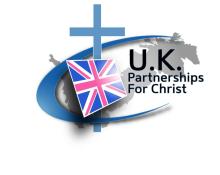









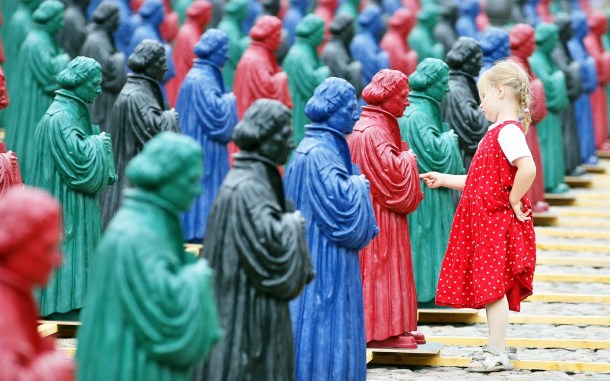


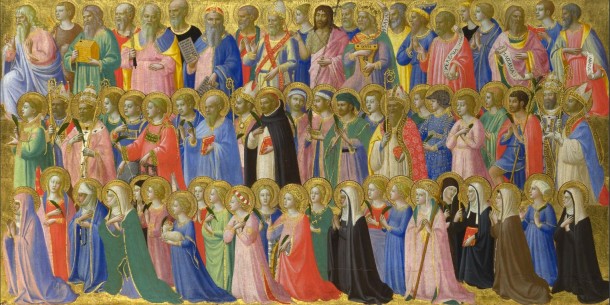



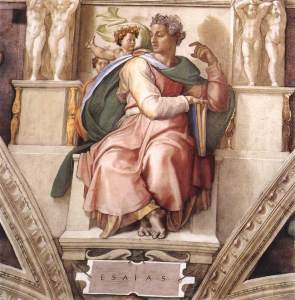
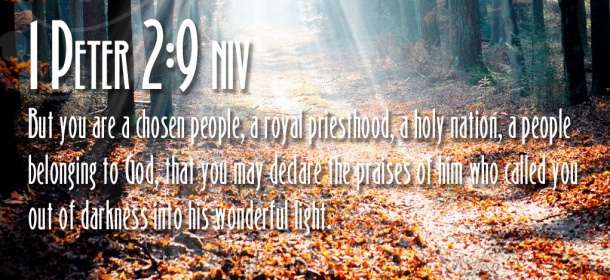
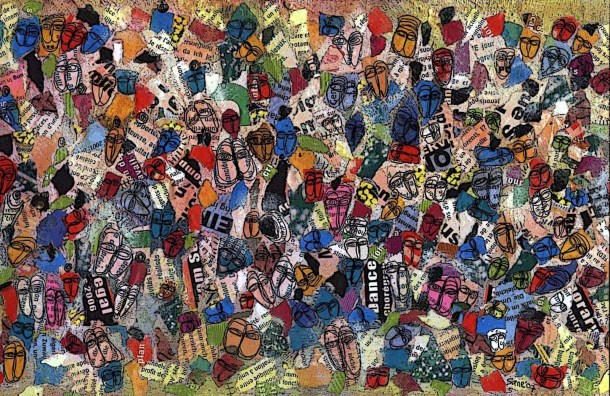
It is just plain bad manners to attack a person’s most cherished beliefs, whether its atheists attacking Christians, Baptists attacking Mormons, or Mormons attacking Muslims. A product of bad upbringing.
Of course, you’re living off the land (“Please Support Us”) so I doubt considerate behavior means anything to you.
Michael
Thanks for your comment, I appreciate if you are new to sites like this it may seem a little strange or even offensive that such a site should exist. I hope you will hang around long enough to at least see why, from my perspective why this site exists.
Sadly from your opening comment I am not sure you are really paying attention to what we are saying. Mormons seem to very commonly commit the “Ad hominem” fallacy, which is to ignore the point being made, and simply criticise the person making it, your comment here seems to be a textbook one of those. Did you not read the article, or did it actually make a fair point?
With regards to the giving we get about £40 a month, none of which supplements my income.
In the interest of good future discussion, might you consider asking why I do this, rather than assuming bad intentions.
I hope you will comment again bud, good to have you here.
re. “in the interest of good future discussion, might you consider asking why I do this, rather than assuming bad intentions.”
A sweet little old lady is walking to Sunday morning services at her church. A young man approaches her and slaps her in the face. Does it even matter why he did it? Does anyone care why he did it? And what would hurt the old girl most … a slap to her face, or telling her that her religion is false, born of Satan?
It is the affront I object to, not the reason for it.
Nobody can prove the existence or non-existence of God or of the legitimacy of a particular church or denomination. Why not let each believer to their own beliefs, from which they get meaning and purpose and comfort and hope, so long as they aren’t strapping on bombs?
What… Joseph Smith was a fraud, and Benny Hinn represents the real Christ? :)) Beam me up. guv.
M
Ok
Hi! Bobby any comment on the new DVD coming from the Mormons. We have had it from 2 sources so far. It is very subtle. Plenty about Christ & resurrection, but no mrntion of Their prophet.Joseoh Smith. Aimed at Christians and non christians. Revd. Iain Stewart
Hi Iain, is that “meet the Mormons”? Haven’t seen that yet, but will certainly let you know when I have.